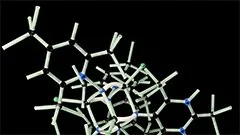Introduction
Non-Mendelian inheritance, also known as non-Mendelian genetics or Mendelian exception, refers to the transmission of traits that do not follow the traditional principles of inheritance as outlined by Gregor Mendel in his pea plant experiments. This phenomenon demonstrates a more complex relationship between genes and their expression than what was initially perceived.
Background
Gregor Mendel's discoveries on pea plants laid the foundation for our understanding of genetics, describing simple traits governed by two alleles at each locus and following the principles of dominance, segregation, and independent assortment. However, numerous exceptions to these rules have been observed in various organisms, which cannot be explained by Mendel's laws alone.
Non-Mendelian Inheritance Mechanisms
Cytoplasmic Inheritance
Cytoplasmic inheritance involves the transmission of traits not encoded in nuclear DNA but in cytoplasmic organelles, such as mitochondria and chloroplasts. Examples include maternal effect traits in animals and self-fertilizing plants with unusual inheritance patterns. The mechanisms underlying cytoplasmic inheritance can be due to factors like extranuclear genes, RNA viruses, or epigenetic modifications.
Mitochondrial Inheritance
In most eukaryotes, mitochondria are inherited maternally, meaning offspring receive their mitochondrial DNA (mtDNA) exclusively from the mother. The presence of multiple mtDNAs within a cell leads to genetic heteroplasmy, which can influence gene expression and phenotypic outcomes.
Genomic Imprinting
Genomic imprinting is an epigenetic phenomenon in which gene expression is influenced by the parental origin of DNA methylation patterns. This process results from differential methylation of alleles during sperm or egg cell formation, leading to the silencing or activation of specific genes depending on their parental origin. Genomic imprinting contributes to the normal development and growth of offspring, but aberrant imprinting can lead to diseases like Prader-Willi and Angelman syndromes.
X-inactivation in Mammals
X-inactivation, or lyonization, is a process where one of the two X chromosomes in female mammals is silenced to ensure equal expression levels between males (XY) and females (XX). This occurs during early embryonic development and is initiated by a long non-coding RNA called XIST. X-inactivation randomness ensures that either the maternal or paternal X chromosome remains active in individual cells, resulting in mosaicism.
Segregation Distorter Systems
Some organisms have evolved complex genetic mechanisms to distort Mendelian segregation ratios. These systems involve genes that influence their own transmission frequency, causing them to be overrepresented or underrepresented in offspring. Examples include the Drosophila segmentation gene ultrabithorax (Ubx) and the maize locus Per1.
Case Studies and Real-World Applications
Heterogametic Sex Determination in Insects
Some insect species exhibit sex determination mechanisms that deviate from the XY system seen in mammals. For example, in Lepidoptera (butterflies and moths), males are typically heterogametic (X0) while females have two X chromosomes. The presence of multiple X chromosomes leads to a non-Mendelian inheritance pattern.
Bacterial Conjugation
Bacteria can exchange genetic material via a process called conjugation, in which plasmids (extrachromosomal DNA) are transferred from one bacterium to another. This horizontal gene transfer allows for rapid adaptation and evolution in response to environmental changes.
Clinical Implications of Non-Mendelian Inheritance
Understanding non-Mendelian inheritance patterns is crucial for diagnosing and treating genetic diseases. For example, knowing the parental origin of a mutated allele can help predict disease risk or inform prenatal screening strategies in cases of genomic imprinting disorders like Prader-Willi and Angelman syndromes. Additionally, studying X-inactivation patterns can contribute to the development of therapies for X-linked diseases such as hemophilia.
Conclusion
Non-Mendelian inheritance presents a fascinating deviation from traditional Mendelian genetics, highlighting the complexity and diversity of genetic systems in various organisms. Understanding these exceptions allows us to expand our knowledge of genetic mechanisms, improve diagnostic tools for inherited diseases, and advance gene therapy strategies.
MCQ: Test your knowledge!
Do you think you know everything about this course? Don't fall into the traps, train with MCQs! eBiologie has hundreds of questions to help you master this subject.
These courses might interest you
Create a free account to receive courses, MCQs, and advice to succeed in your studies!
eBiologie offers several eBooks containing MCQ series (5 booklets available free for each subscriber).




